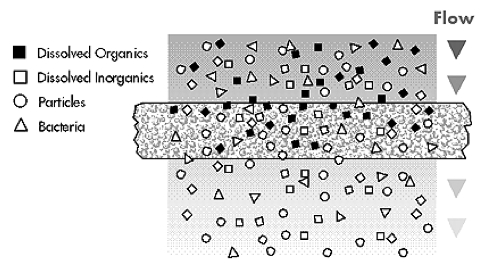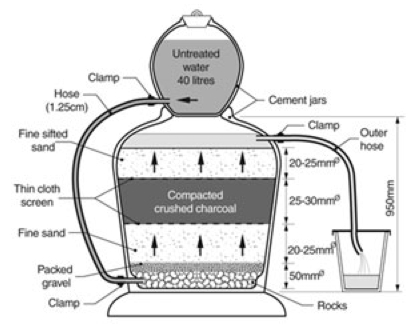Charcoal filter / Activated carbon
| |

Charcoal can be quite effective at removing some tastes, odours, and colour. Ordinary charcoal available locally could be used, but activated carbon is more effective. An example of such a filter is the UNICEF upflow sand filter. However, if the charcoal is not regularly renewed or if the filter is left unused for some time, there is evidence that it can become the breeding ground for harmful bacteria.
Activated carbon filters have a porous surface which traps microscopic particles and large organic molecules. The activated surface areas cling to (adsorb) smaller organic molecules. There are two basic types of activated carbon filters: granular and solid block. Granular activated carbon is most commonly used in household drinking water filtration products. These are easy to install and inexpensive. They significantly reduce bad taste and odor caused by gases and chemicals like chlorine and its byproducts, while leaving behind natural minerals that are essential to good health. Depending on micron size, they may also remove some microorganisms. Solid block carbon filters have a solid honeycombed structure. These are usually whole-house filters, installed directly into the house water supply. They are more expensive than granular activated carbon filters but require less frequent installation, and they reduce more chemicals including pesticides.

